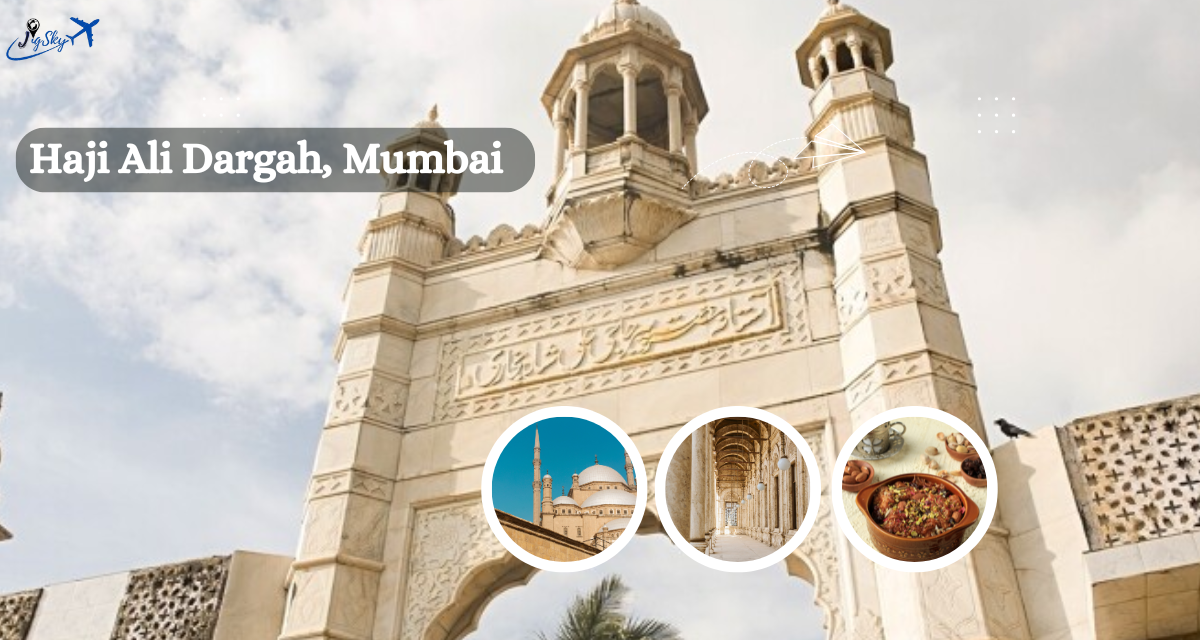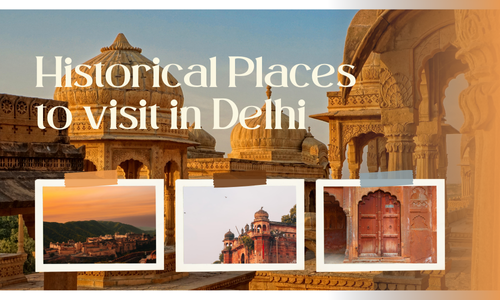Qutub Minar is one of the tallest monuments in Delhi, India. This architecture was built in 1192 by the Qutab-ud-din Aibak. The Architecture considers this to be the oldest monument used for welcoming Muslim kings to come to India. Through this article you Know all the details About Qutub Minar and Its Monuments, so let’s explore.
In the old times, Qutub Minar was one of the symbols of power in India. This was also treated as a landmark of victory and the start-up of the Islamic invasion. क़ुतुब मीनार or قطب مینار is considered one of the old places in Delhi. The historical place width size is 14.32 and the base area is about 2.75 m. Qutub Minar’s highest is 72.6 m.
The Qutub Minar has lots of places to explore. here visitors can see the beautiful Quwwat u’l-Islam which means Light of Islam. In fact, this mosque is the most important part of this most ancient mosque in North India. The biggest mosque is built with a style of a mixture such here, visitors can see some designs as temples and other mosques.
The Irom Pillar is also a major attraction in Qutb Minar. Chandragupta II built this Irom Pillar historical place in the fourth century. This Architecture height is about 7.2 meters. In this pillar, visitors can see the God Garuda which shows Inidan’s history at the time of Morye Samrajya.
- Place Type: Monument
- Status: UNESCO World Heritage Site
- Qutub Minar Height: 72.5 meters
- Qutub Minar base diameter: 14.32 meters (47 feet)
- Qutub Minar top diameter: 2.75 meters (9 feet)
- Qutub Minar floors: 5 Floors with large height
Qutub Minar Architecture

The primary architectural style of Qutub Minar is Indo-Islamic, a fusion of indigenous Indian styles and Islamic effects. The structure of the minaret was started by Qutb-ud-din Aibak, the founder of the Delhi Sultanate, in the late 12th century. Over the centuries, succeeding rulers, including Iltutmish and Firoz Shah Tughlaq, donated to its expansion and embellishment.
Afghan Influence, The earlier portions of Qutub Minar reflect a strong Afghan influence. The use of red sandstone, a material part of North Indian architecture, is prevalent in the construction. The detailed carvings and notes in Arabic and Nagari script also highlight the melding of Afghan and indigenous architectural elements.
Tughlaq and Later Additions, The subsequent rulers, particularly Firoz Shah Tughlaq, played a notable role in growing and renovating Qutub Minar. He added balconies and increased the height of the minaret. The architectural evolution during different periods is visible in the changing styles of the added levels.
Calligraphic Inscriptions and Decorations, Qutub Minar features beautiful calligraphic inscriptions in the decorative bands that beautify its surface. These inscriptions include verses from the Quran and other intricate decorations. The use of red sandstone in alternating layers enhances the visual charm of the minaret.
Corbelled Architecture, One of the notable architectural features of Qutub Minar is its corbelled building or tower. The minaret tapers towards the top, and each story is supported by a projecting circular balcony, which imparts a unique look to the structure.
Quwwat-ul-Islam Mosque
Neighboring to Qutub Minar stands the Quwwat-ul-Islam Mosque, which is part of the Qutub Minar Complex. The mosque showcases an amalgamation of Hindu and Jain temple materials, repurposed for the construction of the mosque during the reign of Qutb-ud-din Aibak. Hindu and Jain sculptures were reused in the construction of the mosque’s pillars and walls, providing a unique historical and architectural narrative.
Qutub Minar Visit Timing
The entry fee for Qutub Minar is INR 40 for Indians and INR 600 for international tourists. However, entry fees are subject to change, and it’s advisable to check the official website of the Archaeological Survey of India (ASI) or contact the local authorities for the most up-to-date information on entry fees before planning your visit.
Qutub Minar Story
The Qutub Minar, located in Delhi, India, is a UNESCO World Heritage Site and the tallest brick minaret in the world. It stands at a height of 73 meters (240 feet) and is an architectural marvel from the medieval era.
Construction and Founding
- Foundation: The construction of Qutub Minar was initiated by Qutb-ud-din Aibak, the founder of the Delhi Sultanate, in 1193. Aibak, a general of the Ghurid dynasty, began this project to commemorate his victory over the last Hindu kingdom in Delhi.
- Completion: Aibak could only complete the first storey before his death. His successor and son-in-law, Shams-ud-din Iltutmish, added three more storeys to the structure. Later, Firoz Shah Tughlaq added the fifth and final storey in the 14th century after damage from an earthquake.
Architectural Significance
- Design: The Qutub Minar is built in red sandstone and marble, adorned with intricate carvings and verses from the Quran. The architectural style is a fine example of Indo-Islamic Afghan architecture.
- Base: The base of the minaret has a diameter of 14.3 meters, which tapers to 2.7 meters at the top.
- Balconies: Each storey is marked by a balcony that encircles the tower, supported by intricately decorated brackets.
Historical Importance
- Victory Tower: It was constructed as a victory tower to celebrate the Muslim conquest of Delhi.
- Mughal Era: The minaret served as a watchtower and was also used by the muezzins (criers) to call the faithful to prayer.
Renovations and Restoration
- Earthquake Damage: The Qutub Minar suffered damage from earthquakes and lightning over the centuries. Renovations were undertaken by several rulers, including Firoz Shah Tughlaq and the British, to preserve the monument.
- Modern Era: Today, it is maintained by the Archaeological Survey of India and remains a major tourist attraction.
Qutub Complex
The Qutub Minar is part of the larger Qutub Complex, which includes several other significant monuments:
- Quwwat-ul-Islam Mosque: The first mosque built in India, located at the foot of the Qutub Minar.
- Iron Pillar: A 7-meter tall iron pillar famous for its rust-resistant composition.
- Alauddin Khilji’s Tomb: The tomb of the second ruler of the Khilji dynasty.
Cultural Impact
The Qutub Minar is not just a historical monument but also a symbol of the rich cultural and architectural heritage of India. It attracts millions of visitors annually, offering a glimpse into the country’s medieval past.
Qutub Minar History
The story of Qutub Minar begins in the late 12th century with Qutb-ud-din Aibak, the first ruler of the Delhi Sultanate. Following the defeat of the last Hindu kingdom in Delhi, Aibak started the construction of the minaret in 1192, marking the success of Islamic rule in the region. Legend has it that the motivation for Qutub Minar was drawn from the Minaret of Jam in Afghanistan.
Under the custom of successive rulers, including Iltutmish and Firoz Shah Tughlaq, the construction of Qutub Minar continued, albeit with changes and additions. The towering structure, reaching a height of 73 meters, was built using red sandstone and marble, adorned with detailed carvings and verses from the Quran.
Qutub Minar served not only as a symbol of Islamic conquest but also as a multifunctional monument. Initially intended for use as an achievement tower and a call to prayer, it later became a symbol of power and prestige for successive dynasties, each leaving its mark on the monument through embellishments and renovations.
Construction of Qutub Minar?
Qutub Minar, located in Delhi, India, was constructed by Qutb-ud-din Aibak, the founder of the Delhi Sultanate. The construction began in 1192, shortly after the defeat of the last Hindu kingdom in Delhi. However, Aibak was only able to complete the basement of the tower.
The construction of the subsequent stories was carried out by his successor, Iltutmish, who added three more floors. The final two floors were added by Firoz Shah Tughlaq in the 14th century after parts of the monument were damaged due to an earthquake.
The Qutub Minar is one of the finest examples of Indo-Islamic architecture, standing at a height of 73 meters (240 feet). It is made of red sandstone and marble and is adorned with intricate carvings and inscriptions in Arabic. The tower serves as a victory monument, commemorating the Muslim dominance in Delhi after the defeat of the last Hindu ruler.
Qutub Minar near places to visit
Also Read
Frequently Ask Questions
Ques: Why Qutub Minar is Famous?
Ans: Qutub Minar, located in Delhi, India, is famous for several reasons:
1. Tallest Brick Minaret: It is the tallest brick minaret in the world, standing at a height of 72.5 meters (237.8 feet).
2. Historical Significance: Qutub Minar is a UNESCO World Heritage Site and is considered one of the most prominent examples of Indo-Islamic architecture in India.
3. Islamic Heritage: The minaret was built in the early 13th century by Qutb-ud-din Aibak, the founder of the Delhi Sultanate, and later expanded by subsequent rulers.
4. Intricate Architecture: The structure is adorned with intricate carvings and verses from the Quran, showcasing the craftsmanship of the time.
5. Cultural Symbol: Qutub Minar has become a symbol of Delhi’s rich historical and cultural heritage and attracts millions of tourists and visitors from around the world every year.
Ques: Who built Qutub Minar?
Ans: Qutub Minar was commissioned by Qutb-ud-din Aibak, the first ruler of the Delhi Sultanate. It was initiated in 1193 AD but was later completed by his successor, Iltutmish.
Ques: Is Qutub Minar free to visit?
Ans: No, there is an entry fee for visiting Qutub Minar.
Ques: What is the best time to visit Qutub Minar?
Ans: The best time to visit Qutub Minar is during the morning or late afternoon to avoid crowds and the heat.
Ques: Is Qutub Minar worth visiting?
Ans: Yes, Qutub Minar is worth visiting for its historical importance, impressive architecture, and beautiful surroundings.











